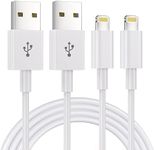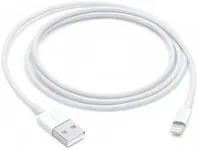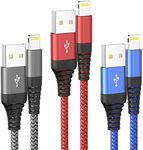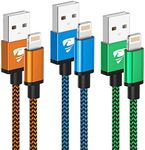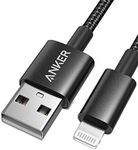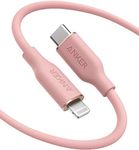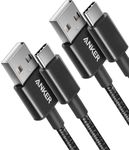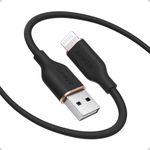Buying Guide for the Best Lightning Cables
When choosing a lightning cable, it's important to consider factors that will ensure compatibility, durability, and performance. Lightning cables are used primarily for charging and data transfer for Apple devices, so selecting the right one can enhance your device's functionality and longevity. Understanding the key specifications will help you make an informed decision that suits your needs.LengthThe length of a lightning cable is crucial depending on how and where you plan to use it. Cables typically range from 0.5 meters to 3 meters. Shorter cables (0.5-1 meter) are ideal for close-range charging, such as connecting to a laptop or a nearby power outlet. Medium-length cables (1-2 meters) offer more flexibility and are suitable for general use. Longer cables (2-3 meters) are perfect for situations where the power source is far from your device, like when charging from a wall outlet across the room. Choose a length that fits your typical usage scenario to avoid unnecessary clutter or inconvenience.
DurabilityDurability is a key factor in ensuring your lightning cable lasts a long time. Look for cables with reinforced connectors and braided or thickened outer layers, as these features help prevent fraying and damage from bending. Some cables are labeled as 'heavy-duty' or 'reinforced,' indicating they are designed to withstand more wear and tear. If you frequently travel or use your cable in various environments, investing in a more durable option can save you from frequent replacements.
CertificationCertification, specifically MFi (Made for iPhone/iPad/iPod) certification, is important for ensuring compatibility and safety. MFi-certified cables are tested by Apple to meet their performance standards, which means they are less likely to cause issues with your device. Non-certified cables might be cheaper, but they can pose risks such as overheating or not working properly with software updates. For peace of mind and to protect your device, it's advisable to choose an MFi-certified cable.
Charging SpeedCharging speed is determined by the cable's ability to carry current. Most lightning cables support standard charging speeds, but some are designed for fast charging, which can significantly reduce the time it takes to charge your device. If your device supports fast charging, look for cables that specify compatibility with higher wattage chargers. This is particularly useful if you need to quickly charge your device on the go or during short breaks.
Data Transfer SpeedData transfer speed is important if you frequently sync your device with a computer or transfer large files. Standard lightning cables offer adequate speeds for most users, but if you need faster data transfer, look for cables that support USB 3.0 or higher. These cables can transfer data more quickly, which is beneficial for tasks like backing up your device or transferring high-resolution media files. Consider your typical data transfer needs when selecting a cable.
